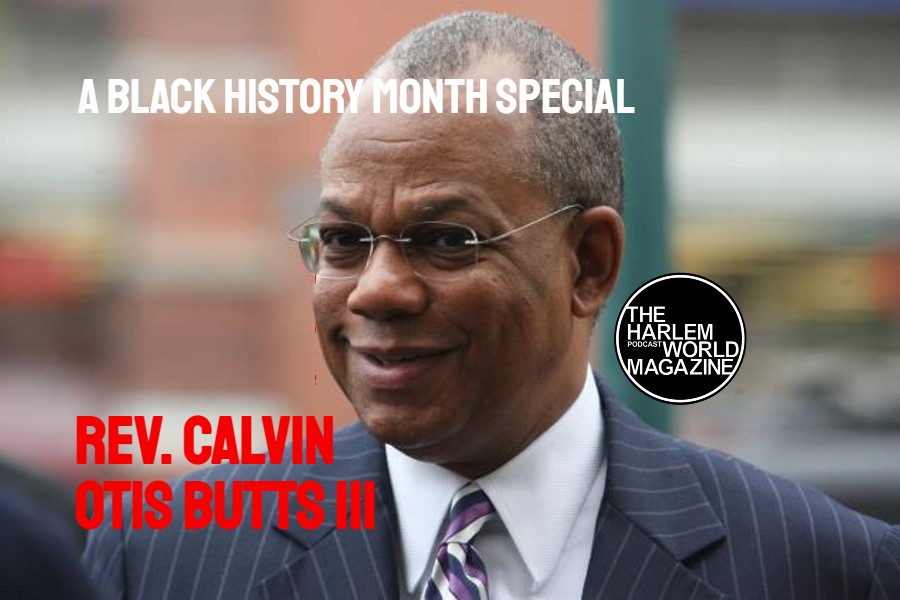 Gordon Roger Alexander Buchanan Parks (November 30, 1912 – March 7, 2006) was an American photographer, musician, writer and film director. He is best remembered for his photographic essays for Life magazine and as the director of the 1971 film, Shaft.
Gordon Roger Alexander Buchanan Parks (November 30, 1912 – March 7, 2006) was an American photographer, musician, writer and film director. He is best remembered for his photographic essays for Life magazine and as the director of the 1971 film, Shaft.
At the age of twenty-five, Parks was struck by photographs of migrant workers in a magazine and bought his first camera, a Voigtländer Brillant, for $12.50 at a Seattle, Washington, pawnshop. The photography clerks who developed Parks’ first roll of film, applauded his work and prompted him to seek a fashion assignment at a women’s clothing store in St. Paul, Minnesota, that was owned by Frank Murphy. Those photographs caught the eye of Marva Louis, the elegant wife of heavyweight boxing champion Joe Louis. She encouraged Parks to move to Chicago in 1940, where he began a portrait business and specialized in photographs of society women.
Over the next few years, Parks moved from job to job, developing a freelance portrait and fashion photographer sideline. He began to chronicle the city’s South Side black ghetto and, in 1941, an exhibition of those photographs won Parks a photography fellowship with the Farm Security Administration (FSA).
Working as a trainee under Roy Stryker, Parks created one of his best-known photographs, American Gothic, Washington, D.C., named after the iconic Grant Wood painting, American Gothic. The photograph shows a black woman, Ella Watson, who worked on the cleaning crew of the FSA building, standing stiffly in front of an American flag hanging on the wall, a broom in one hand and a mop in the background. Parks had been inspired to create the image after encountering racism repeatedly in restaurants and shops in the segregated capitol city.
Upon viewing the photograph, Stryker said that it was an indictment of America, and that it could get all of his photographers fired. He urged Parks to keep working with Watson, however, which led to a series of photographs of her daily life. Parks said later that his first image was overdone and not subtle; other commentators have argued that it drew strength from its polemical nature and its duality of victim and survivor, and so has affected far more people than his subsequent pictures of Mrs. Watson.
After the FSA disbanded, Parks remained in Washington, D.C. as a correspondent with the Office of War Information. Finally, disgusted with the prejudice he encountered, however, he resigned in 1944. Moving to Harlem, Parks became a freelance fashion photographer for Vogue. He later followed Stryker to the Standard Oil Photography Project in New Jersey, which assigned photographers to take pictures of small towns and industrial centers. The most striking work by Parks during that period included, Dinner Time at Mr. Hercules Brown’s Home, Somerville, Maine (1944); Grease Plant Worker, Pittsburgh, Pennsylvania (1946); Car Loaded with Furniture on Highway (1945); and Ferry Commuters, Staten Island, N.Y. (1946).
Parks renewed his search for photography jobs in the fashion world. Despite racist attitudes of the day, the Vogue editor, Alexander Liberman, hired him to shoot a collection of evening gowns. Parks photographed fashion for Vogue for the next few years and he developed the distinctive style of photographing his models in motion rather than poised. During this time, he published his first two books, Flash Photography (1947) and Camera Portraits: Techniques and Principles of Documentary Portraiture (1948).
A 1948 photographic essay on a young Harlem gang leader won Parks a staff job as a photographer and writer with Life magazine. For twenty years, Parks produced photographs on subjects including fashion, sports, Broadway, poverty, and racial segregation, as well as portraits of Malcolm X, Stokely Carmichael, Muhammad Ali, and Barbra Streisand. He became “one of the most provocative and celebrated photojournalists in the United States.”
In the 1950s, Parks worked as a consultant on various Hollywood productions. He later directed a series of documentaries on black ghetto life that were commissioned by National Educational Television.
With his film adaptation of his autobiographical novel, The Learning Tree in 1969, Parks became Hollywood’s first major black director. It was filmed in his home town of Fort Scott, Kansas. Parks also wrote the screenplay and composed the musical score for the film.
Shaft, a 1971 detective film by Parks starring Richard Roundtree, became a major hit that spawned a series of films that would be labeled as, blaxploitation. Parks’ feel for settings was confirmed by Shaft, with its portrayal of the super-cool leather-clad, black private detective hired to find the kidnapped daughter of a Harlem racketeer.
Parks also directed the 1972 sequel, Shaft’s Big Score, in which the protagonist finds himself caught in the middle of rival gangs of racketeers. Parks’s other directorial credits include The Super Cops (1974) and Leadbelly (1976), a biopic of the blues musician Huddie Ledbetter.
In the 1980s, he made several films for television and composed the music and a libretto for Martin, a ballet tribute to Martin Luther King, Jr., which premiered in Washington, D.C. during 1989. It was screened on national television on King’s birthday in 1990.
In 2000, as an homage, he had a cameo appearance in the Shaft sequel that starred Samuel L. Jackson in the title role as the namesake and nephew of the original John Shaft. In the cameo scene, Parks was sitting playing chess when Jackson greeted him as, “Mr. P.”.
His first job was as a piano player in a brothel when he was a teenager. Parks also performed as a jazz pianist. His song “No Love”, composed in another brothel, was performed during a national radio broadcast by Larry Funk and his orchestra in the early 1930s.
Parks composed Concerto for Piano and Orchestra (1953) at the encouragement of black American conductor, Dean Dixon, and his wife Vivian, a pianist, and with the help of the composer Henry Brant. He completed Tree Symphony in 1967. In 1989, he composed and choreographed Martin, a ballet dedicated to Martin Luther King, Jr., the civil rights leader who had been assassinated.
Beginning in the 1960s, Parks branched out into literature, writing The Learning Tree (1963). He authored several books of poetry, which he illustrated with his own photographs, and he wrote three volumes of memoirs.
In 1981, Parks turned to fiction with Shannon, a novel about Irish immigrants fighting their way up the social ladder in turbulent early twentieth-century New York. Parks’ writing accomplishments include novels, poetry, autobiography, and non-fiction that includes photographic instructional manuals and filmmaking books. Parks also wrote the poem entitled, “The Funeral” during this period.
Gordon Parks was the subject of film and print profiles produced by others, notably, Half Past Autumn in 2000. A gallery exhibition of his photography-related, abstract oil paintings was held in 1981.
Parks was born in Fort Scott, Kansas, the son of Sarah (née Ross) and Jackson Parks. He was the last child born to them. His father was a farmer who grew corn, beets, turnips, potatoes, collard greens, and tomatoes. They also had a few ducks, chickens, and hogs.
He attended a segregated elementary school. The town was too small to afford a separate high school that would facilitate segregation of the secondary school, but blacks were not allowed to play sports or attend school social activities, and they were discouraged from developing any aspirations for higher education. Parks related in a documentary on his life that his teacher told him that his desire to go to college would be a waste of money.
When Parks was eleven years old, three white boys threw him into the Marmaton River, knowing he couldn’t swim. He had the presence of mind to duck underwater so they wouldn’t see him make it to land.
His mother died when he was fourteen. He spent his last night at the family home sleeping beside his mother’s coffin, seeking not only solace, but a way to face his own fear of death. At this time, he left home, being sent to live with other relatives. That situation ended with Parks being turned out onto the street to fend for himself.
In 1929, he briefly worked in a gentlemen’s club, the Minnesota Club. There he not only observed the trappings of success, but was able to read many books from the club library. When the Wall Street Crash of 1929 brought an end to the club, he jumped a train to Chicago, where he managed to land a job in a flophouse.
Parks was married and divorced three times. Parks married Sally Alvis in Minneapolis during 1933 and they divorced in 1961. He married Elizabeth Campbell in 1962 and they divorced in 1973. Parks first met Genevieve Young in 1962 when he began writing The Learning Tree. At that time, his publisher assigned her to be his editor. They became romantically involved at a time when they both were divorcing previous mates, and married in 1973. They divorced in 1979. For many years, Parks was romantically involved with Gloria Vanderbilt, the railroad heiress and designer.[25] Their relationship evolved into a deep friendship that endured throughout his lifetime.
Parks fathered four children: Gordon, Jr., David, Leslie, and Toni (Parks-Parsons). His oldest son Gordon Parks, Jr., whose talents resembled his father’s, was killed in a plane crash in 1979 in Kenya, where he had gone to direct a film.Parks has five grandchildren: Alain, Gordon III, Sarah, Campbell, and Satchel. Malcolm X honored Parks when he asked him to be the godfather of his daughter, Qubilah Shabazz.
Gordon Parks received more than twenty honorary doctorates in his lifetime.
He died of cancer at the age of 93 while living in Manhattan, and is buried in his hometown of Fort Scott, Kansas.
Parks is remembered for photography, film making, music composition, and writing. He also is known for his activism and campaigning for civil rights. He was the first African American to work at Life magazine and the first to write, direct, and score a Hollywood film. He was profiled in the 1967 documentary, “Weapons of Gordon Parks”, by American filmmaker Warren Forma.
Parks was a co-founder of Essence magazine. He was one of the early contributors to the style of movies that became known as the blaxploitation genre, in which negative stereotypes of black males as being involved in drugs, violence, and women were exploited for commercially-successful films featuring black actors.
Parks said that freedom was the theme of all of his work. He described it as, “Not allowing anyone to set boundaries, cutting loose the imagination, and then making the new horizons.”
Parks’ son, Gordon Parks, Jr. (1934–1979) directed films, including Super Fly, Three the Hard Way, and Aaron Loves Angela. His career was cut short when he died in a plane crash on location in Africa.
Become a Harlem Insider!
By submitting this form, you are consenting to receive marketing emails from: Harlem World Magazine, 2521 1/2 west 42nd street, Los Angeles, CA, 90008, https://www.harlemworldmagazine.com. You can revoke your consent to receive emails at any time by using the SafeUnsubscribe® link, found at the bottom of every email. Emails are serviced by Constant Contact


















